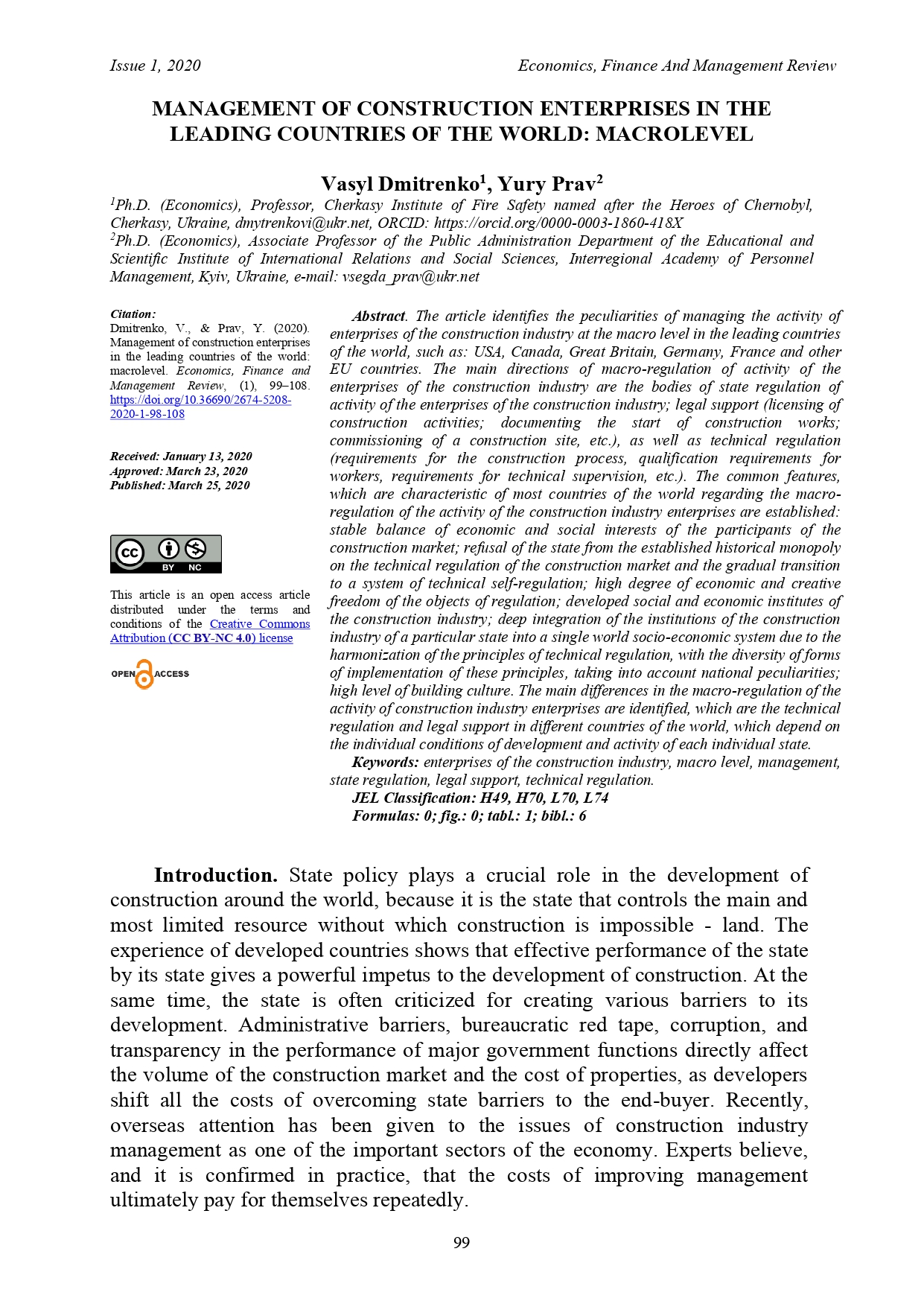MANAGEMENT OF CONSTRUCTION ENTERPRISES IN THE LEADING COUNTRIES OF THE WORLD: MACROLEVEL
DOI:
https://doi.org/10.36690/2674-5208-2020-1-98-108Keywords:
enterprises of the construction industry, macro level, management, state regulation, legal support, technical regulationAbstract
The article identifies the peculiarities of managing the activity of enterprises of the construction industry at the macro level in the leading countries of the world, such as: USA, Canada, Great Britain, Germany, France and other EU countries. The main directions of macro-regulation of activity of the enterprises of the construction industry are the bodies of state regulation of activity of the enterprises of the construction industry; legal support (licensing of construction activities; documenting the start of construction works; commissioning of a construction site, etc.), as well as technical regulation (requirements for the construction process, qualification requirements for workers, requirements for technical supervision, etc.). The common features, which are characteristic of most countries of the world regarding the macro-regulation of the activity of the construction industry enterprises are established: stable balance of economic and social interests of the participants of the construction market; refusal of the state from the established historical monopoly on the technical regulation of the construction market and the gradual transition to a system of technical self-regulation; high degree of economic and creative freedom of the objects of regulation; developed social and economic institutes of the construction industry; deep integration of the institutions of the construction industry of a particular state into a single world socio-economic system due to the harmonization of the principles of technical regulation, with the diversity of forms of implementation of these principles, taking into account national peculiarities; high level of building culture. The main differences in the macro-regulation of the activity of construction industry enterprises are identified, which are the technical regulation and legal support in different countries of the world, which depend on the individual conditions of development and activity of each individual state.
Downloads
References
Ofori, G. (2006) Challenges of construction industries in developing countries: lessons from various countries. doi=10.1.1.198.2916.
Drewer, S. (1990) The international construction system, Habitat International, 14, 2-3.
Loraine, R. K. (1992) Construction management in developing countries, Thomas Telford.
Hall, Mark A. & Jaggar, David M. Should construction enterprises, working internationally, take account of cultural differences in culture? Retrieved from: http://www.arcom.ac.uk/-docs/proceedings/ar1997-001-010_Hall_and_Jaggar.pdf
Bourdeau, L. (1999). Sustainable development and the future of construction: a comparison of visions from various countries. Building Research and Information, 2(6): 355–367.
Ofori, G. (2006) Research on construction industry development at the crossroads. Retrieved from: https://www.tandfonline.com/doi/ref/10.1080/01446199300000017?scroll=top

Downloads
Published
How to Cite
Issue
Section
License

This work is licensed under a Creative Commons Attribution-NonCommercial 4.0 International License.








